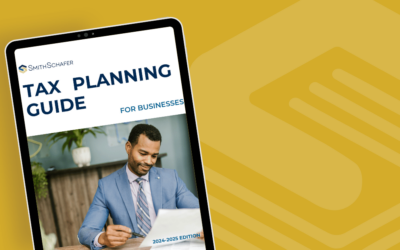The Tax Cuts and Jobs Act makes sweeping changes. But some of the new provisions won’t necessarily be relevant to your situation. Here is a quick reference guide to the major changes under the new law to help you understand what is changing.
In general, these changes are effective for tax years beginning after December 31, 2017. For businesses, these changes are permanent, unless otherwise noted.
| Buzzwords | Effects of Business Taxes |
|---|---|
| Alternative minimum tax (AMT) | Repeals AMT for corporations. |
| Bonus depreciation | Significantly expands first-year deductions but only temporarily. |
| Cash-basis accounting | Increases the annual gross-receipts threshold for eligibility to use this simplified reporting method. |
| Corporate tax rate | Installs a flat 21% tax rate that also applies to personal service corporations. |
| Cost segregation studies | Changes the depreciation rules and recovery periods; may warrant a study to reclassify certain costs, thereby accelerating deductions. |
| Domestic production activities deduction (DPAD) | Eliminates this break, also known as the manufacturers’ deduction under Sec. 199. |
| Entertainment deductions | Reduces or eliminates tax breaks for business entertainment. |
| Entity choice | Introduces new considerations when deciding on business structure; applies 1) temporary changes for 2018 through 2025to owners of pass-through entities and 2) permanent changes to C corporations. |
| Family and medical leave programs | Provides a new credit for employers. |
| Foreign operations | Provides tax incentives to repatriate foreign income and conduct operations in the United States. |
| Fringe benefits | Eliminates deductions for the cost of providing certain transportation-related employee benefits. |
| Interest expense deductions | Repeals the earnings stripping rules; provides new limits on interest expense deductions, with several exceptions. |
| Like-kind exchanges | Eliminates Sec. 1031 like-kind exchanges for exchanges of personal property; retains Sec. 1031 for exchanges of real estate. |
| Loan balances for departing employees | Introduces new rules for employees with outstanding 401(k) loan balances. |
| Long-term construction contracts | Expands the exception from the requirement to use the percentage-of-completion (PCM) method to report income from long-term construction contracts. |
| Meal expenses | Allows 50% deductions for on-premises cafeterias and meals provided for the convenience of employers for 2018 through 2025; eliminates these deductions after 2025. |
| Moving expenses | Requires employers to include job-related moving expense reimbursements as taxable income on employees’ W-2s (except for active-duty members of the military) for 2018 through 2025. |
| Net operating loss (NOL) deductions | Imposes new limits; disallows NOL carrybacks but allows indefinite NOL carryforwards. |
| Owners’ compensation | May affect pass-through income deduction for qualified business income (below). |
| Pass-through income deduction for qualified business income (QBI) | Creates a new deduction for sole proprietorships, limited liability companies (LLCs), partnerships and S corporations that’s subject to numerous restrictions and available only from 2018 through 2025. |
| Recovery periods | Reduces the recovery periods for qualified improvement property; simplifies the rules. |
| Research costs | Requires specified research or experimental expenditures to be capitalized and amortized rather than currently deducted; goes into effect in 2022. |
| Section 179 expensing | Permanently liberalizes the Sec. 179 first-year depreciation rules. |
| Share-based payments | Allows qualified employees who exercise these instruments to defer related income for up to five years; may encourage private companies to issue these awards and employees to exercise them. |
| Uniform capitalization (UNICAP) | Expands the exception for small taxpayers from the requirement to follow the complicated UNICAP rules for inventory accounting. |
| Vehicle deductions | Makes temporary and permanent favorable changes to depreciation rules for vehicles used more than 50% for business. |
Note: Be aware that federal tax law changes could affect state income tax obligations. This trickle-down effect will create uncertainty as states decide whether to conform to or decouple from the changes to the federal rules.
CONTACT US
In the wake of the new tax law, midyear tax planning meetings are critical for business owners. We have provided only abbreviated explanations of each issue listed above. Discuss the details of the relevant provisions with your Smith Schafer professional to determine how the changes will affect your tax situation for 2018 and beyond.



